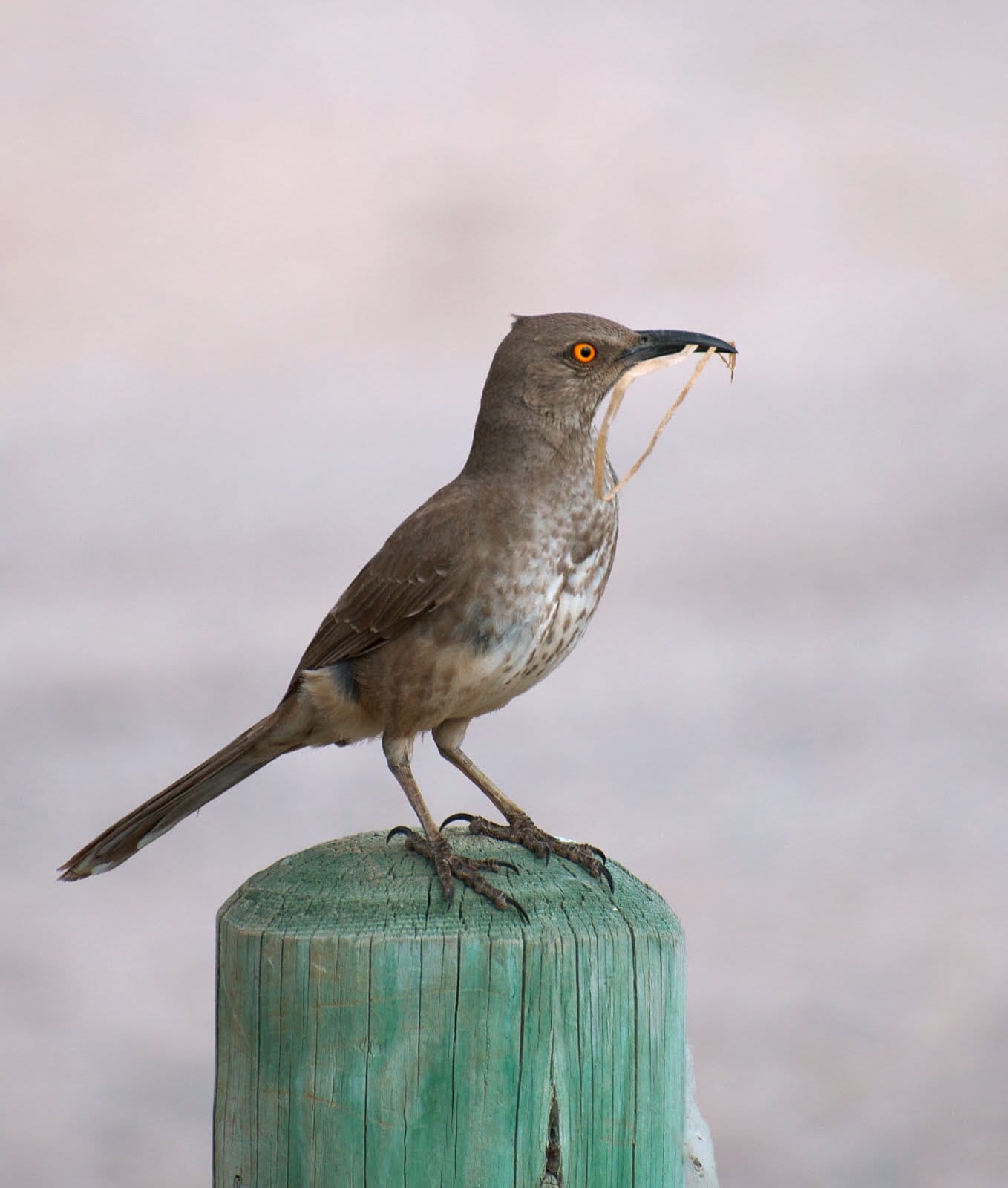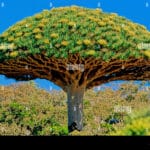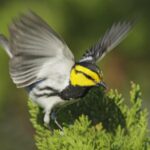Out in the sun-baked deserts of the American Southwest and Mexico, you’ll find a truly unique character – the curved-bill thrasher bird. This bird is a true icon of the desert, easily recognized by its namesake curved beak, and it has a whole bunch of fascinating secrets just waiting to be uncovered. This medium-sized songbird, scientifically known as Toxostoma curvirostre, captivates with its approximately 11-inch frame draped in grayish-brown plumage. Its most distinguishing feature? A long, black beak that curves dramatically downward, almost as if perpetually smiling. This striking adaptation is more than just an aesthetic quirk; it’s a finely-tuned tool essential for its survival in the harsh desert landscapes it calls home.
A Closer Look: Beyond the Curve
Imagine a bird about the size of a robin, dressed in dusty brown feathers, sporting a long tail, and strong legs built for navigating the rough desert ground. But it’s that prominent curved black beak that truly sets it apart. This beak is a multi-purpose tool, expertly designed for digging into the ground, unearthing tasty insects, and prying open seed pods.
These birds are tough cookies, perfectly adapted to their harsh environment. They’re not picky eaters either. Insects, spiders, and seeds are their usual fare, but they’ll happily gobble up fruits and even cactus flowers if they can find them. Talk about adaptable!
Home Sweet Home: From Deserts to Door Yards
Curved-bill thrashers like it hot and dry. You’ll find them in deserts and other arid landscapes, hanging out in places with plenty of cactus, shrubs, and other desert plants. They thrive in a variety of habitats, from the cacti-studded deserts and rocky canyons to the scrubbier brushlands. But here’s the surprising part – they’ve also learned to adapt to life in urban areas. As long as there are some bushes and trees for shelter, these resourceful birds can make themselves right at home, often spotted in backyards and parks that offer suitable greenery.
Love is in the Air: Nesting Among the Thorns
When it’s time to raise a family, curved-bill thrashers get to work building sturdy nests, often tucked away in the protective spines of a cactus, hidden within the branches of a shrub, or even built right on the ground. These nests aren’t just haphazard piles of twigs; they’re carefully crafted using a combination of plant materials, often lined with softer materials like feathers or fur for added comfort.
Within these well-protected nurseries, the female typically lays 2 to 5 pale blue or greenish eggs, speckled with brown. Both parents share the responsibility of keeping the eggs warm and caring for their chicks – a true team effort! They fiercely defend their chosen nesting spots, especially during breeding season, engaging in dramatic standoffs to protect their territory and young.
The Desert’s Songbird: More Than Meets the Ear
If you’re lucky enough to hear a curved-bill thrasher sing, you’ll understand why they’re considered one of the desert’s most talented vocalists. Their songs are a mixture of clear whistles and musical phrases, completely distinct from other thrasher species. Some even describe their vocalizations as being more melodious than their thrasher relatives. And it’s not just about attracting mates; these calls serve as territorial warnings, letting other birds know who’s boss.
Protecting a Desert Icon: Challenges and Conservation
While these birds are doing okay for now, it’s important that we protect their desert homes. Things like urban sprawl and climate change pose challenges to their survival, making it crucial to preserve their habitats and promote sustainable land management practices.
Outperforming the Competition: A Closer Look at the Curved Bill Thrasher Bird
The curved bill thrasher, with its powerful legs and distinctive bill, reigns supreme in the harsh landscapes of the American Southwest and Mexico. While known for their melodic calls, these thrashers are masters of survival, utilizing their unique beaks for unearthing hidden prey and navigating a diverse diet of insects, seeds, fruits, and even the occasional cactus flower.
From prickly cacti to dense shrubs, curved bill thrashers construct sturdy nests in a variety of desert habitats, showcasing their resilience. Discover the fascinating adaptations that allow these feathered foragers to thrive in even the most demanding environments.
For a rare sight of a mystical plant whose sap is known as dragon’s blood, check out the dracaena cinnabari. And if you’re ever in the mood for an odd but amusing piece of art, find out what goes on in a dung beetle ark.











